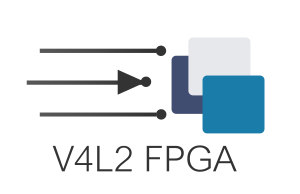V4L2 FPGA/Introduction: Difference between revisions
(Created page with "<noinclude> {{V4L2_PCIe/Head}} </noinclude> <!-- If you want a custom title for the page, un-comment and edit this line: {{DISPLAYTITLE:V4L2 PCIe - <descriptive page name>|noe...") |
No edit summary |
||
| (19 intermediate revisions by 5 users not shown) | |||
| Line 1: | Line 1: | ||
<noinclude> | <noinclude> | ||
{{ | {{V4L2_FPGA/Head|next=Introduction/Overview|previous=}} | ||
</noinclude> | </noinclude> | ||
<!-- If you want a custom title for the page, un-comment and edit this line: | <!-- If you want a custom title for the page, un-comment and edit this line: | ||
{{DISPLAYTITLE:V4L2 PCIe - <descriptive page name>|noerror}} | {{DISPLAYTITLE:V4L2 PCIe - <descriptive page name>|noerror}} | ||
--> | --> | ||
{{message|title=Driver List Information|Refer to the [[RidgeRun_Linux_Camera_Drivers/Available_Camera_Drivers/List_of_Tested_Camera_Sensors|RidgeRun Linux Camera Drivers]] to meet all the list of Drivers available}} | |||
In this section, you are going to learn more about the V4L2 FPGA and its main features. When you finish this section you are going to have a general knowledge about this project's key features, and the supported modules. | |||
*[[V4L2_FPGA/Introduction/Overview|Overview]] section explains the project's general structure and technologies. | |||
*[[V4L2_FPGA/Introduction/Frame_Grabber|Frame Grabber]] section explains how to use the FPGA as a frame grabber capable of consuming video content from an external source, process them through hardware-described accelerators, and finally, provide them to the system for further processing. | |||
*[[V4L2_FPGA/Introduction/Sink|Sink]] section explains how to use the FPGA as a sink element capable of consuming video frames from your system. Some examples are accelerated video decoding and display with custom screens. | |||
*[[V4L2_FPGA/Introduction/HW_Acceleration|Filter]] section explains the advantages of implementing image/video filter accelerators on the FPGA. This feature can be used to process video content in any required way and return it back to the system for further processing. | |||
*[[V4L2_FPGA/Introduction/Budget_Estimator|Budget Estimator]] section contains an estimator of the framerate. | |||
After RidgeRun created V4L2_FPGA, [https://github.com/NVIDIA/jetson-rdma-picoevb NVIDIA published a V4L2 driver] that uses RDMA, making it useful if the video frames are going to be processed by the CUDA hardware. RidgeRun can support the NVIDIA driver or add RDMA support to the RidgeRun created V4L2_FPGA driver. | |||
<noinclude> | <noinclude> | ||
{{ | {{V4L2_FPGA/Foot||Introduction/Overview}} | ||
</noinclude> | </noinclude> | ||
Latest revision as of 21:19, 18 September 2024
| V4L2 FPGA |
|---|
 |
| Introduction |
| Getting the Code |
| Examples |
| GStreamer Pipelines |
| Supported Platforms |
| Contact Us |
In this section, you are going to learn more about the V4L2 FPGA and its main features. When you finish this section you are going to have a general knowledge about this project's key features, and the supported modules.
- Overview section explains the project's general structure and technologies.
- Frame Grabber section explains how to use the FPGA as a frame grabber capable of consuming video content from an external source, process them through hardware-described accelerators, and finally, provide them to the system for further processing.
- Sink section explains how to use the FPGA as a sink element capable of consuming video frames from your system. Some examples are accelerated video decoding and display with custom screens.
- Filter section explains the advantages of implementing image/video filter accelerators on the FPGA. This feature can be used to process video content in any required way and return it back to the system for further processing.
- Budget Estimator section contains an estimator of the framerate.
After RidgeRun created V4L2_FPGA, NVIDIA published a V4L2 driver that uses RDMA, making it useful if the video frames are going to be processed by the CUDA hardware. RidgeRun can support the NVIDIA driver or add RDMA support to the RidgeRun created V4L2_FPGA driver.
